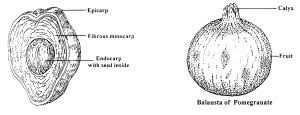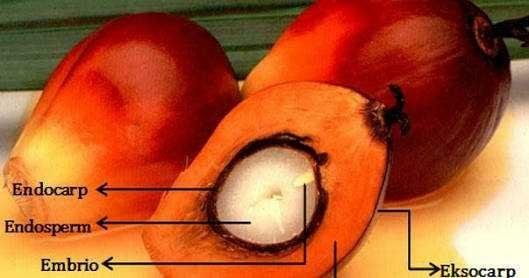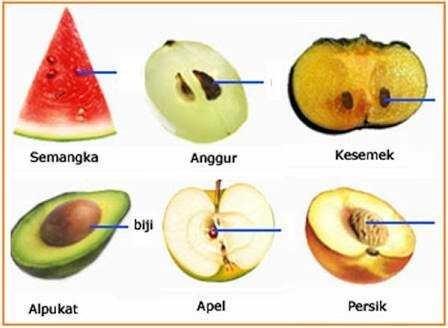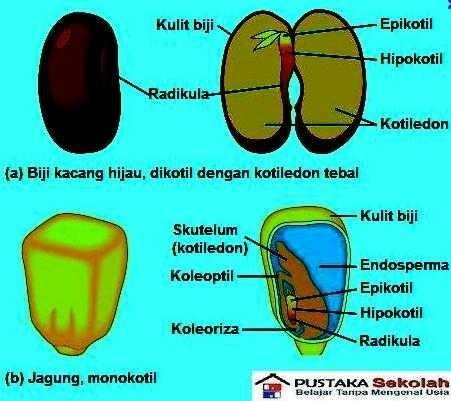Biology and ecology # 4 [Fruit and seed structure. ecological morphology of scope on fruits]
@sahlan89
Good evening steemian friend tonight I will discuss about the biology and morphology of coconut plants

Monokotil: Hard, slippery, round, and has a green & yellow color. Example, coconut fruit
Dikotil: Not hard, slippery, oval, and has a green & yellow color. Example, mango fruit
Monocotyl: Epicarp, mesocarp, and endocarp.
Dikotil: Epikarp, mesocarp, and endokarp.

- In general, the fruit develops from the female genital part (pistil) called fruit will contain seeds. Complete fruit is composed of seeds, fruit flesh, and fruit peel. The skin of the fruit is still easy to not experience the separation of tissue. After cooking, the skin of the fruit can be divided into three layers, namely epikarp, mesokarp, and endokarp.
- Epikarp is a hard outer layer and not penetrating water, such as coconut.
Mesokarp is a thick layer and filamentous, such as fog (coconut), fleshy (mango and papaya).
Endocarp is the deepest layer composed of very hard and thick layers of cells, such as shell (coconut), a thin membrane (rambutan).
Do you know how fruit helps plant dispersal?
Many fruit are nutritious, colorful, or smell nice. The goal is to attract the attention of birds and mammals to eat the fruit. The hard seeds do not come digested and will come out with feces (dirt). If the seeds that come out with the dirt fall in the appropriate place, the seeds will grow and develop into a new individual. So, in addition to functioning to store food reserves, fruit also serves to help the spread / spread of plants.

1.Monocots: Small, slippery, and single pieces.
2.Dikotil: Small, slippery, and two pieces
Monocots: Seed coat, endosperm, cotyledon, epicotyl, and radicle.
Dikotil: Seed coat, cotyledon, epicotyl, and
hypocotyl.

Seed is part of the plant formed from the fertilization (fertilisasi) located inside the fruit will. Inside the fruit will contain seeds. Inside the seeds there are embryos that are individual candidates.
Each embryo in the seeds consists of the root of the institution, the leaves of the institution, and the stem of the institution..
The root of the institution (radikula), is the root candidate.2) Leaves
Leaf institution (cotyledon), is the first leaves in plants. It functions as a place for photosynthesis before the leaves actually form. This section also serves to store food
- Trunk institution, divided into stem segments on the leaves of institutions and stem segments under the leaves of the institution. Leaf institutions and stem institutions are often also called plumula (peak institution)
In Angiospermae, the seeds will be wrapped in a fruit leaf, whereas in Gymnospermae it is not.
Seed serves as a food reserve and plant dispenser. Seed dispersers can occur with the help of wind, water, bats, and humans.
Wind, example: kapok
Water, for example: coconut
Bats, for example: sawo kecik
Human example: quinine and various types of plants of economic value.
@sahlan89